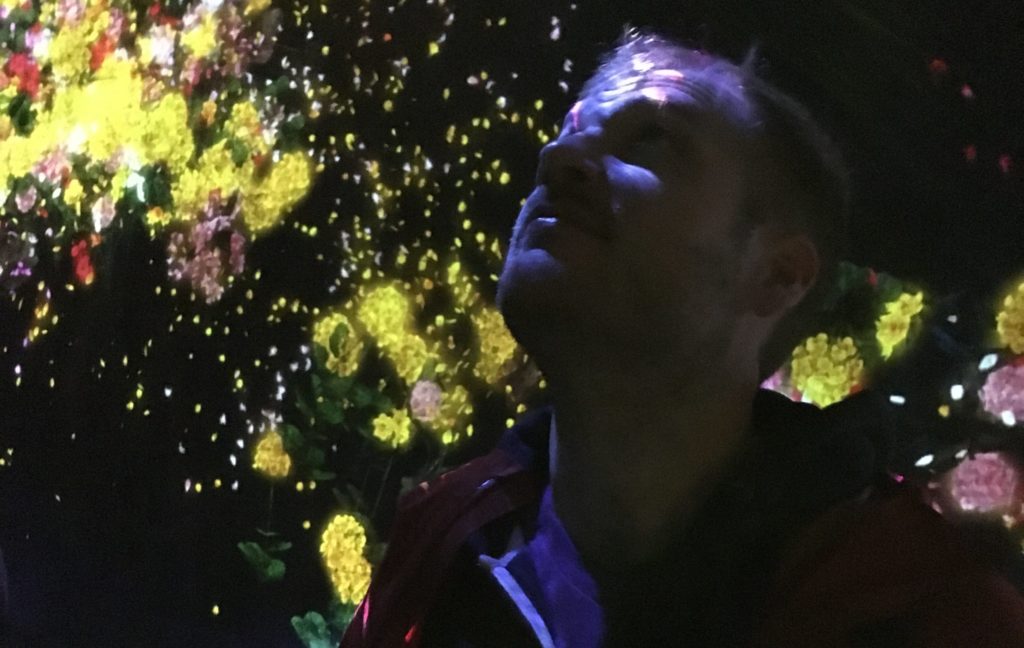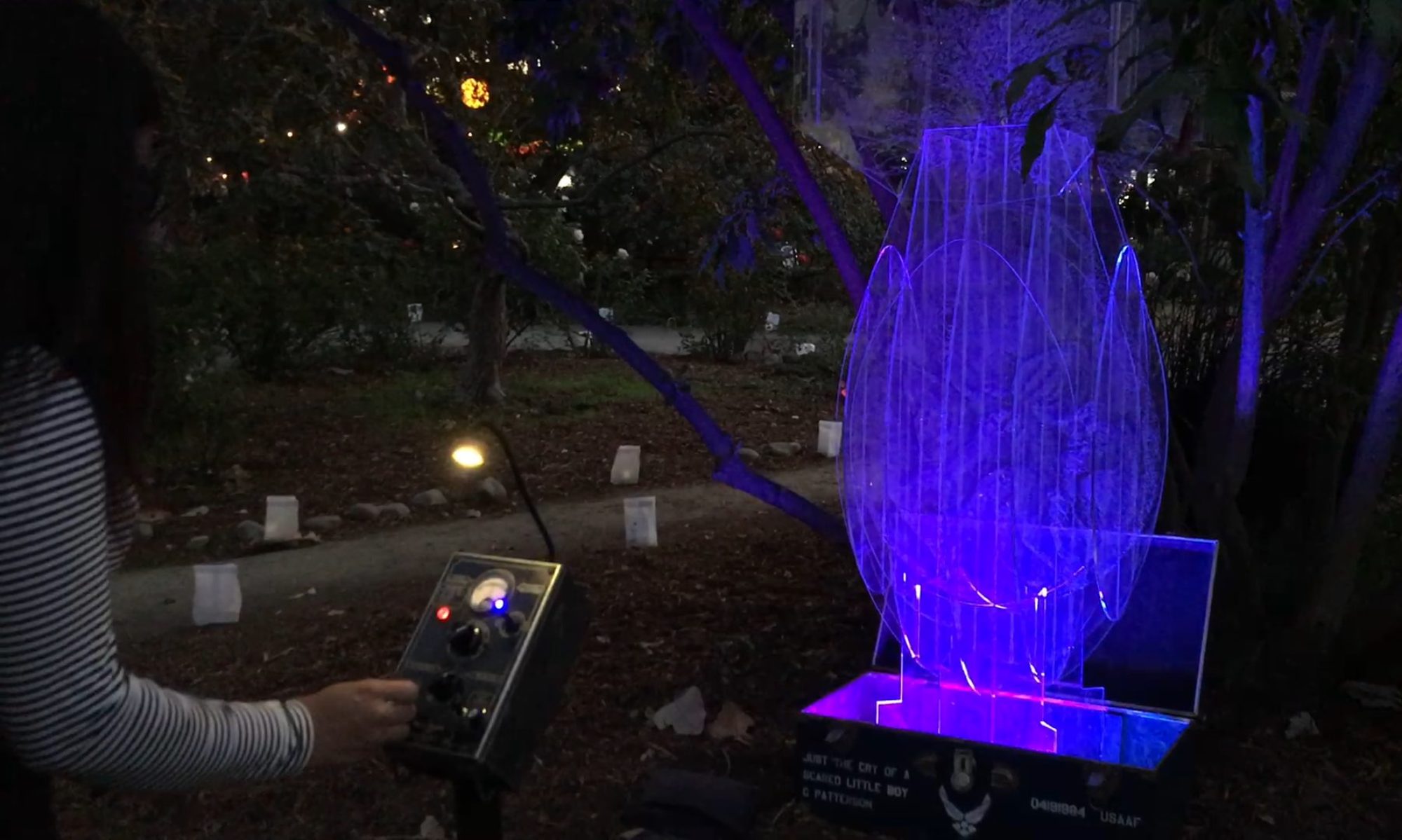I travelled to Japan in April 2019 to see the country and its art. Here’s the first post of things that stuck. Here’s Part 2, Part 3, Part 4, Part 5.

Having attended a TeamLab exhibition in California a few years back, I knew I needed to see their work at the source. I went to both current Tokyo exhibitions, Planets and Borderless.
I’d have to recommend Borderless for its sheer scale, which I wasn’t expecting: There’s no map, and you’re encouraged to wander and discover hidden rooms, so I had no idea how big the thing was until almost the end of the visit. By then I’d exhausted myself on the first “half”. My recommendation: go early, bring a bag lunch, and make a day of it! There’s so much to explore and it’s all excellent stuff.
Projection on floors, walls, and other surfaces is their bread and butter. Hundreds of projectors with some sort of wide-spread lenses are all near-seamlessly aligned to form a continuous space covering tens of thousands of square feet. These are all displaying high-quality realtime 3D imagery, all reacting to participants as they move though the space. “Creatures” move throughout the exhibit, suggesting a single “map” but billions of particles. This is no small technological feat.
TeamLab Planets only took an hour to see, but it’s a much more tactile and immersive experience. Basically, there’s water! You walk in it! They project on it! The infrastructure needed to maintain a giant indoor space filled with two feet of heated water around a bunch of computer equipment…stresses me out just thinking about it. In the marquee exhibit, participants stand in knee-deep milky water with swimming koi and flowers projected onto the water’s surface. The koi swim around you and turn into flowers when touched. These flowers change with the seasons, a really nice long-form touch to the work.
Borderless had an entire floor filled with more kid-friendly / playground type exhibits: a large undulating space with projections; a space filled with giant LED balls; things to climb; slides with projections. One room let you draw your own sea creature, photograph it, and see it move around the projected space. This is when I was running out of steam, so couldn’t document as effectively.
Impressive if only for the obvious costs involved, one room had 224 moving-head stage lights arranged on walls and ceiling, all moving in coordination with music (and supposedly participant movement, though I didn’t see how). Given that each unit is probably at least $1k, you’re looking at a quarter-million just in the hardware. They didn’t even use their colored lenses until I’d been in the space for 15 minutes.
That brings up another theme throughout TeamLab’s work, besides near-universal interactivity: you can spend minutes or even hours with each work and see different things. Projections change throughout the course of the day, warranting repeated visits to the same spaces. So much work went into the programming as well as the hardware/infrastructure to give their work depth.
My favorite piece, of course, was Crystal Universe. This had appeared in Menlo Park and is at both Tokyo exhibitions too. It’s what I’d like Equanemone to eventually become (well, with ability to touch it and interact directly, of course!). Hundreds of thousands of LEDs are arranged in hanging strands in a huge mirrored space. Volumetric patterns are displayed in the matrix, controlled by participants’ smartphones (this never really worked, but there was an iPad installed) and reacting to those in the space. It’s beautiful, mesmerizing, and completely immersive.
If you have a chance to see TeamLab’s work anywhere, do it. Buy tickets in advance, arrive early / anticipate a line at Borderless, and spend hours enjoying these phenomenal works of interactive digital art.

